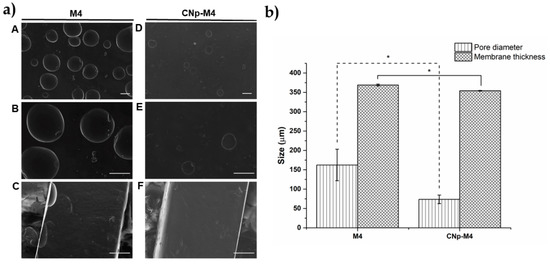hidden
Over 10 years experience of Traceability Solutions

By Pharmatrax Author
Category: News
 No Comments
No Comments
3D Printing Review in Drug Delivery Systems: Pharmaceutical Particulates and Membranes
Researchers from Egypt, India, and the UK are studying the role of 3D printing in drug delivery systems. Their findings are detailed in the recently released ‘Pharmaceutical Particulates and Membranes for the Delivery of Drugs and Bioactive Moleclules,’ as they review new trends and developments.
In reviewing twelve different papers on the subject of pharmaceutical particulates and membranes, the researchers also collaborated with experts regarding design, materials, and applications; for instance, in a study by Kumar et al. [2], the researchers learned of an extended release drug delivery system for nicotine that shows potential for Parkinson’s disease interventions:
“These have been developed in the form of membranes with minimal rates of matrix degradation and retarding nicotine release. This has led to the zero-order release for 50 days following exposure to simulated cerebrospinal fluid (CSF),” stated the researchers.
Mora-Espíet et al. [3] have explored the targeting of microparticles and culturing breast cancer cell lines. Huang et al. [4] confirmed a new process for accelerating drug dissolution with ibuprofen-loaded hydroxypropyl methylcellulose nanoparticles.

Immunofluorescence analysis by confocal laser scanning microscope (CLSM) of cells cultured in static conditions. Confocal images of D492 and D492HER2 cells cocultured in static conditions and incubated with microparticles biofunctionalized with a non-specific secondary antibody (µP-secAb) or a specific anti-HER2 antibody (µP-antiH). Cells, constitutively expressing green fluorescent protein (GFP, green), were incubated with Alexa Fluor® 546 Phalloidin (red) to label actin microfilaments and Alexa Fluor® 405 conjugate secondary antibody (blue) to label HER2 in the plasma membrane. The arrows point to some examples of µPs located inside the cells. From ‘Cell Internalization in Fluidic Culture Conditions Is Improved When Microparticles Are Specifically Targeted to the Human Epidermal Growth Factor Receptor 2 (HER2).’
“During this process, it was shown that a key parameter, i.e., the spreading angle of atomization could provide a linkage among the working process, the property of generated nanoparticles and their functional performance,” stated the researchers. “They confirmed that the nanoparticle diameter (prepared based on a modified technique) has a profound influence on the drug release performance.”
Shah et al. [5] contributed a study as they moved forward to refine the effectiveness of moxifloxacin, an antibiotic used to treat a variety of bacterial infections. With a new system for optimizing nanoemulsion, they were able to ‘enhance the therapeutic effects of moxifloxacin,’ resulting in safe delivery.
Another development, contributed by Wan et al. [6], allowed for sustained release of loxoprofen sodium (LXP), with the addition of a unique coating:
“Their results identified both the citric acid (CA) and ADEC as the dissolution and diffusion-rate controlling materials significantly decreasing the drug release rate,” stated the researchers. “The optimal formulation for a pH-independent drug release in media has been suggested as at a pH above 4.5 and at slightly slow release in acid medium.
“The pharmacokinetic studies have revealed that a more stable and prolonged plasma drug concentration profile of the optimal pellets has been achieved, with a relative bioavailability of 87.16% compared with the conventional tablets.”
Studying magnetic nanoparticles, Iglesias et al. [7] stated that BMNPs (biometic) were superior to MNPs (inorganic) for drug loading of molecules ‘positively charged at neutral pH.’ MNPs, however, have the potential for suitable transport abilities while under a magnetic field. Savin et al [8] explored gel formulations for skin melanoma treatment, along with fabricating breast cancer cells in 3D models—following one of the major trends in medicine today using models for treatment, training, and surgical planning too.
“The in vitro results for the tested CD-NHF-loaded gel formulations have revealed that the new composites can affect the number, size, and cellular organization of spheroids and impact individual tumor cell ability to proliferate and aggregate in spheroids,” stated the researchers.
Guadarrama-Acevedo et al. [9] created a new wound dressing made of alginate membrane and polycaprolactone nanoparticles, loaded with curcumin for healing. Integrating nanocarriers allows for drug permeation into multiple layers of skin, thus eliminating solubility issues with curcumin. Rancan et al. [10] performed research showing that after six hours, nanofiber mats offer the best drug concentration upon delivery.

Morphology and porosity of alginate membranes. (a) Micrographs by scanning electronic microscopy of the alginate membrane surface (A, B, D, and E) and membrane thickness (C and F). Magnification of 100× for A, D; 220× in B, C, E and F; the scale bar is 100 μm; (b) pore diameter and membrane thickness of M4 and CNp‒M4 membranes, mean ± SE, n = 3. * indicates that p < 0.05 is statistically significant. From ‘Development and Evaluation of Alginate Membranes with Curcumin-Loaded Nanoparticles for Potential Wound-Healing Applications.’
Further, Lian et al. [11] developed a system for using red blood cell membrane-camouflaged ATO-loaded sodium alginate nanoparticles (RBCM-SA-ATO-NPs, RSANs) to eliminate toxicity of ATO. Their work also showed that RSANS have lower levels of cytotoxicity, upon comparison with normal cells; RSANS also displayed antitumor effects on NB4 cells and 7721 cells.
Adeleke et al. [12] developed an isoniazid suspension as an antitubercular agent against TB, offering extended release:
RDS has been dispersible and stable in the dried and reconstituted states over 4 months and 11 days respectively, under common storage conditions.



